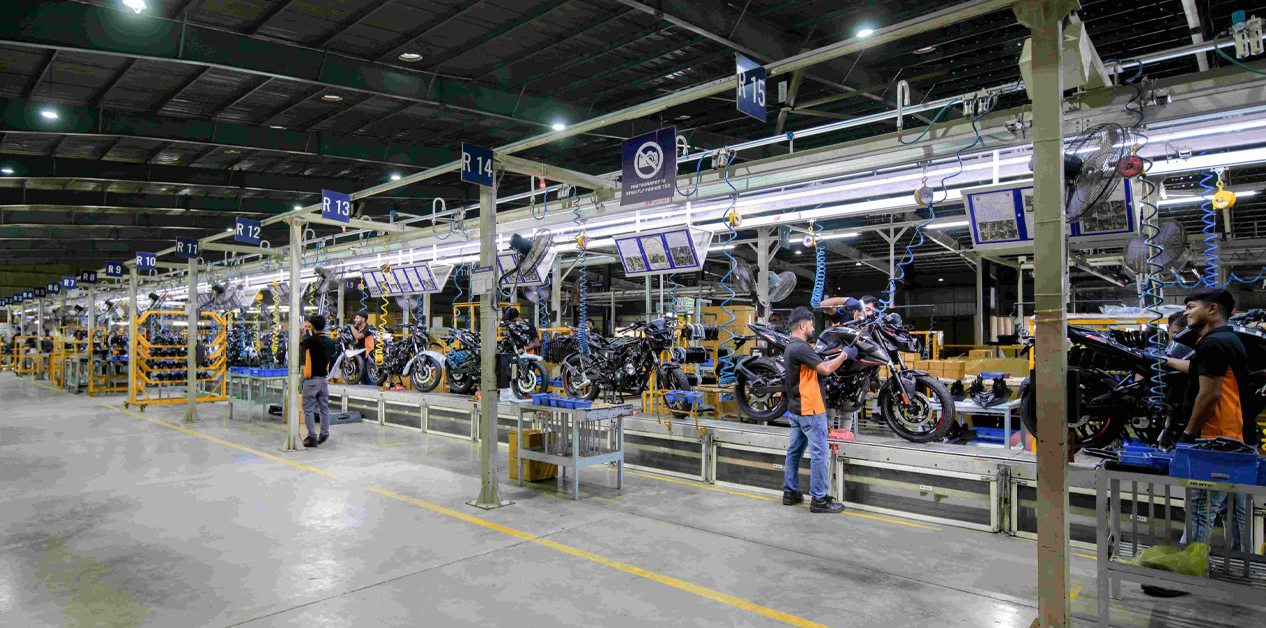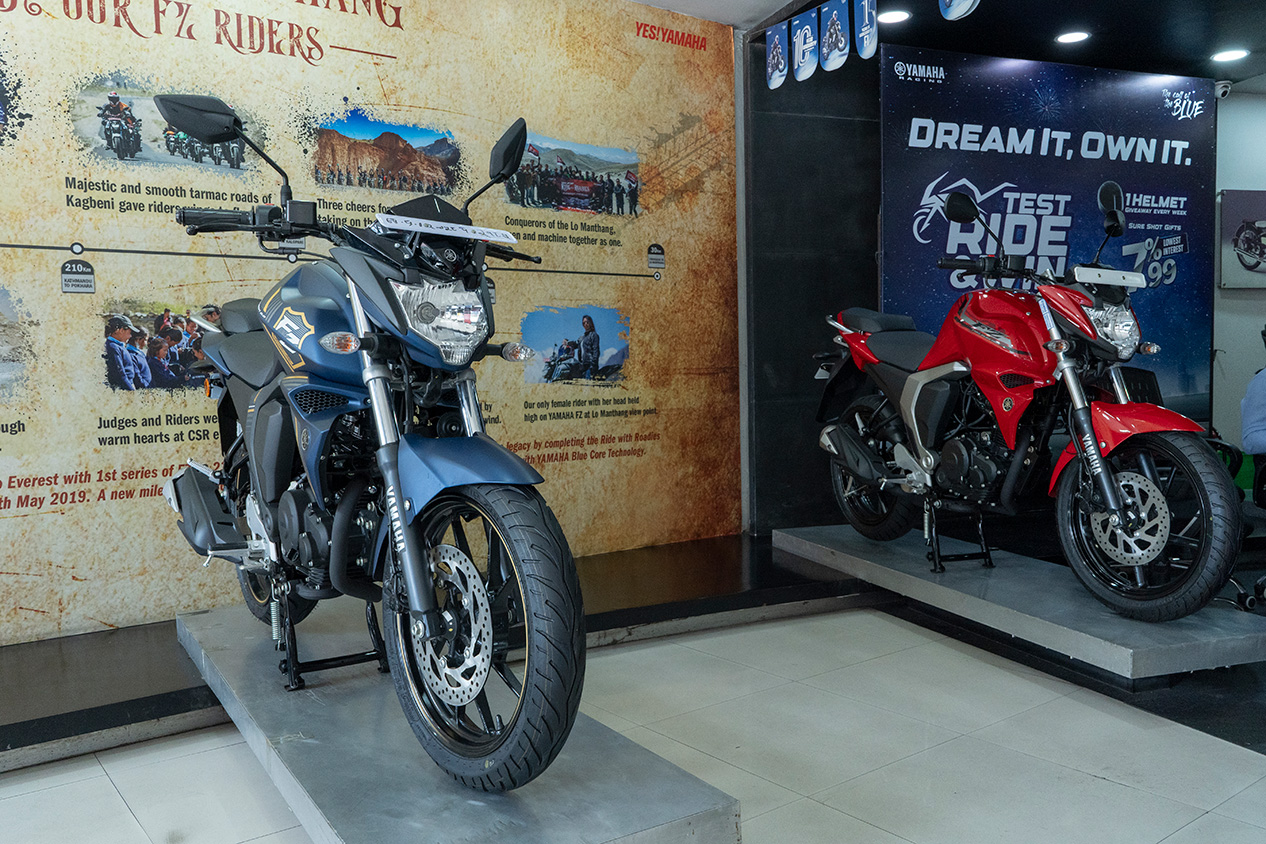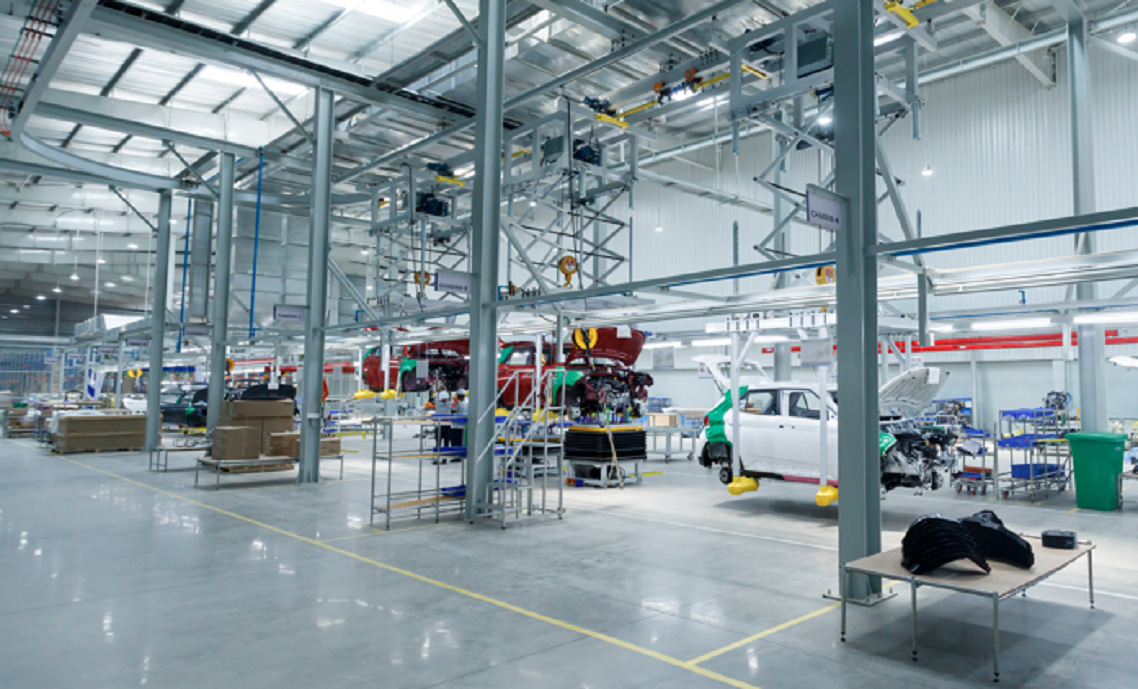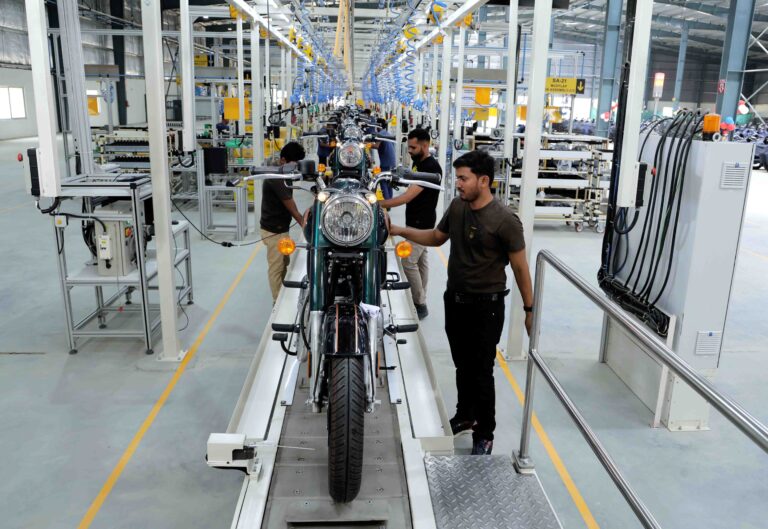
Despite concessions, no abatement in vehicle prices

KATHMANDU: When the government unveiled its policy to promote domestic vehicle assembly, allowing parts to be imported and installed locally, consumers were widely optimistic, anticipating a significant reduction in vehicle prices. Yet, nearly a decade later, this promised relief remains elusive. Ironically, the substantial revenue the government willingly forfeits annually is not reaching consumers but is instead being channeled directly into the coffers of a handful of select businessmen.
The government began incentivizing the vehicle assembly industry from the fiscal year 2016/17. These industries have been receiving a customs duty exemption of 25 percent and an excise duty exemption of 50 percent on the import of Completely Knocked Down (CKD) parts, meaning vehicle components. For only one year in between, the excise duty exemption was 25 percent.
It was claimed that providing such heavy tax exemptions would encourage these industries to flourish. Consumers were expected to be able to purchase vehicles at lower prices, and increased entrepreneurship would create job opportunities. Ultimately, this was expected to support the overall economy.
Businesses, seeing the heavy tax exemption on importing parts and assembling vehicles in Nepal, enthusiastically registered their industries one after another. Seven popular motorcycle brands are assembled in Nepal. Approximately 1,500 people are employed in these motorcycle plants. However, despite the government giving huge concessions to the industrialists, neither have the prices of goods decreased nor has employment increased. Instead, the benefit of the tax exemption has indirectly accrued only to the businessmen.

Royal Enfield motorcycles. Photo: Bikram Rai/Nepal News
They have received a total revenue exemption of Rs 14.720 billion over the last five years and three months. This means the state is encouraging the industry by forfeiting revenue. The irony is that there is no difference in the price between domestically assembled motorcycles and those imported fully built from India or third countries. Conversely, consumers complain that the safety standards are not fully met in some brands of domestically assembled products.
The Department of Customs data shows that when only two assembly industries were opened in the fiscal year 2020/21, only Rs 60 million worth of parts were imported. However, that volume has increased abnormally over five years.
In just three months of the current fiscal year 2025/26, Rs 10.217 billion worth of parts have been imported. The Department of Customs data shows that businessmen received a revenue exemption of Rs 2.849 billion for the import of goods of that value.
In the last fiscal year, 2024/25, Rs 20.144 billion worth of CKD was imported. If the government had not provided a tax exemption on that value, the revenue collection would have been Rs 23.850 billion. However, only Rs 19.133 billion was collected in revenue. This means a tax exemption of Rs 4.717 billion was provided.
In the fiscal year 2024/25, at least Rs 10.74 billion worth of CKD was imported. From that, Rs 9.290 billion in revenue was received. Through the exemption, Rs 2.190 billion went into the pockets of businessmen.
As industries have increased, the volume of parts imported under customs exemption is increasing every year. The size of the revenue the government forfeits is also rising. However, consumers have not received a direct benefit from this.

FZ series motorcycle from the Yamaha brand. Photo: Bikram Rai/Nepal News
At least 10 models of the Bajaj brand of motorcycles are assembled in Nepal. Only the FZS V3 model of Yamaha is assembled locally in Nepal. Deepak Kumar Agrawal, Executive Director of MAW Rides, admits that even assembling the motorcycles in Nepal after importing the parts has not resulted in cheaper prices. He says, “There wasn’t much difference in price between importing fully built motorcycles and assembling them in Nepal. Costs for packaging the parts, shipping costs, and industry operating expenses prevent the price from being cheaper.”
This company assembles the Yamaha brand of motorcycles. The maximum retail price of the FZS V3 is Rs 412,900.
Agrawal claims that assembling motorcycles with high-capacity engines is cheaper due to higher tax exemptions. He asserts that the price of those with lower-capacity engines will not be cheaper. He says, “At first glance, it seems that if goods are imported with customs exemption and assembled in Nepal, they should be cheaper. But the situation is not like that. Nevertheless, the price of motorcycles in Nepal has not increased as much as it has in India.”
However, Meghraj Paudel, Director of TG Auto Group, claims that the price of Royal Enfield motorcycles has been reduced by up to Rs 100,000. “No Royal Enfield motorcycle comes from abroad. All are assembled in Nepal,” he says. “We are committed to the customer when setting the price. We have also paid equal attention to the concession provided by the government.”
There has been criticism that assembling Royal Enfield compromises certain safety standards. Paudel, however, claims there are no shortcomings.
Which brands are assembled?
The Hulas Auto Crafts under the Golchha Organization established a plant in 2018, claiming to assemble Bajaj brand motorcycles. The company, which stated that it had already invested about Rs 1 billion, claimed it had the capacity to produce 100,000 units per year. Currently, however, only about 35,000 units are being assembled annually.
The Jagadamba Auto Corporation under Shankar Group opened an industry in 2019, claiming to assemble TVS brand motorcycles. That company is currently producing only 25,000 units annually. Besides that, TG Auto Group under Triveni Group has been assembling Royal Enfield since 2023. The Morang Auto Works (MAW) assembles Yamaha, Jyoti Group assembles Honda, Vishal Group assembles Suzuki, and CG Motors of Chaudhary Group has been assembling Hero brand motorcycles since 2024.
These industries have not been able to produce according to their installed capacity. Businessmen argue that production cannot be done according to capacity because the demand for motorcycles is continuously decreasing. Agrawal says, “Currently, the demand for motorcycles in the market is falling. Due to the decreased demand, we have not been able to produce according to capacity. We are assembling significantly less compared to the production capacity.”
Motorcycles prepared domestically do not include any message stating, ‘Assembled in Nepal.’ The Department of Transport Management continues to list the mother company of the respective vehicle in the ‘Manufacturing Company’ field of the vehicle details (blue book) when registering it in an individual’s name.

Hyundai four-wheeler assembly plant. Photo: Laxmi Group
Little consumer relief from domestic four-wheeler assembling
The Laxmi Motor Corporation, the official seller of Hyundai vehicles, started assembling four-wheelers from mid-April 2024. The company, which installed a plant in Nawalparasi, is preparing the Creta and Venue models of Hyundai. Deepak Thapaliya, managing director of the company, says they are assembling 150 units monthly.
“We started the plant with the goal of producing 30 units monthly. We produced about 600 units of cars within 2024. Currently, 150 units of cars are being produced monthly,” he says.
Thapaliya claims that the cars assembled in Nepal are cheaper by up to Rs 900,000. The company’s website update mentions that the price of the Hyundai Creta is Rs 900,000 cheaper.
The government has given a customs duty exemption of 25 percent and an excise duty exemption of 50 percent on the import of car parts. Like Hyundai, Suzuki has also registered a company to assemble cars in Nepal.
Question over heavy tax exemption
Government bodies themselves have started questioning the tax concessions received by assembly industries. Discussions have begun to review the tax exemption policy, claiming that consumers are not receiving the benefits promised by the government facility. There was a heated discussion in the Ministry of Finance on this issue before the budget for the current fiscal year was introduced.

Hero brand motorcycles, which are assembled locally by CG Motors. Photo: Bikram Rai/Nepal News
Finance officials held the view that the industries were failing to ‘value add’ to production and were neglecting localization. Consequently, they recommended abolishing the tax concession facility.
The NADA Automobiles Association of Nepal, realizing the government was planning to withdraw the tax concession, drew the government’s attention to the matter. “An assembly industry leads to the establishment of several other dependent industries. Its scope is multi-dimensional,” stated a NADA press release issued on May 23, 2025. “If the government ignores these facts and introduces a policy that cuts even the existing facilities, not only will the huge investment of industrialists and businessmen in the assembly industry sink, but Nepal’s industrialization race is also certain to fall further behind.” Following pressure from businessmen, the government continued the previous year’s exemption policy in the budget.
The Office of the Auditor General has also been raising questions regarding the heavy revenue exemptions. The 62nd report of the Auditor General states, “When import duty concessions are given to vehicles imported as CKD for assembly industries, the minimum value addition that the assembly industry should achieve in Nepal is not met, so this concession system should be improved.”
It has been stated that the exemption of Rs 3.212 billion given in the previous fiscal year by various customs offices under the pretext of ‘unassembled vehicles’ should be investigated and recovered. The Auditor General had previously questioned the justification for the tax exemption. The 58th report stated, “As the value added is not even equal to the revenue exemption given by the government, the benefit of the revenue exemption was found to be received only by the importer. It does not appear to have contributed to the economy or the consumer,” and, “Even with the exemption on excise duty and VAT, the assembly system does not seem justified, as the general public cannot purchase the assembled motorcycles at a price lower than that of imported ready-made motorcycles.”

Royal Enfield’s assembly plant in Birgunj. Photo: Royal Enfield
Weak standards, no monitoring
There are no clear legal provisions for motorcycle assembly. Businessmen, seeing the profit from the tax exemption announced through the budget on parts, quickly opened industries. However, there are no clear standards for the methods and procedures to be followed when assembling vehicles.
The Department of Industry issued standards in 2022 for establishing an assembly plant, setting four main conditions. These conditions included achieving 10 percent value addition in the first year and 30 percent in five years. Similarly, conditions were set to provide employment to 50 domestic workers in the first year and 200 people in five years. It was also stipulated that at least 10 percent domestic raw materials should be utilized in five years. However, no one monitors whether the industries are operating according to these standards.
Those standards are often criticized for being hastily issued without adequate study. The standards do not address the safety of vehicles assembled in Nepal using parts imported from abroad. The quality of motorcycles and scooters prepared here is also not tested. The standards stipulate that a committee comprising representatives from the Department of Industry, the Department of Transport Management, and the Department of Environment should conduct safety testing of domestically assembled vehicles. The technology and protocol for this testing are not mentioned. Suresh Shrestha, Chief of the Vehicle Fitness Test Center in Teku, Kathmandu, says that while the safety check is supposed to be done there, such testing has not taken place.
Businessmen have demanded that the tax concession facility be continued by creating a permanent law. Paudel, Director of TG Auto Group, argues that this industry has flourished due to tax concessions, and to protect and promote it, the 15-year tax exemption must be defined by law.
“The tax exemption is currently provided through the budget. This creates uncertainty about what the tax rate will be every year when the budget approaches. It also ‘terrorizes’ businessmen,” he says. “That must be stabilized for 15 years by law. Only that will encourage the industrial promotion of the automobile sector.”
Agrawal, Executive Director of MAW Rides, says the government must focus on establishing the automobile sector as an industry by maintaining policy stability on taxes. “There is no policy stability in Nepal. A policy of exemption on excise duty for assembled parts swings between 25 and 50 percent,” he says. “That does not allow businessmen to make long-term plans. Policy stability must be ensured on such matters.”
For the automobile sector to evolve into a legitimate industry, NADA Automobiles Association of Nepal insists that the government assure CKD tax stability for the coming 15 years. Just as assembly plants fueled India’s massive sectoral growth, they represent Nepal’s critical foundation. Crucially, the government’s obligation is to ensure that the generous facilities given to manufacturers translate directly into tangible savings for the consumer.